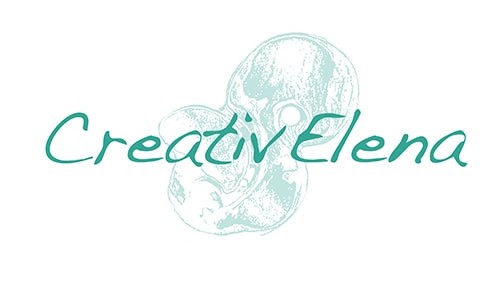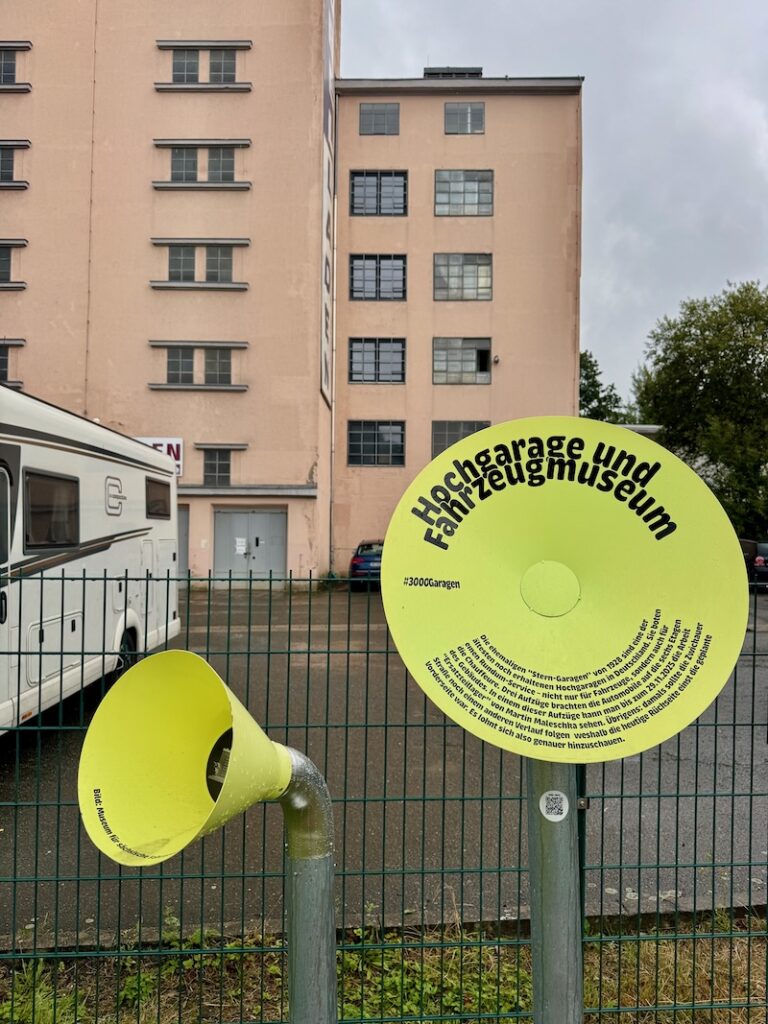“People work in Chemnitz, do business in Leipzig and party in Dresden.”
The words of my city guide Manuela Vogelsang about the “historic city triangle” of Chemnitz, Leipzig and Dresden still ring in my ears. With her wealth of knowledge, she gives me a much-needed, historic perspective on the city of Chemnitz, a city I have never visited before – unlike Leipzig or Dresden.
“Chemnitz, what do you want in Chemnitz?” I am asked more than once in the run-up to my trip. Many people don’t even know where this city is located in former East Germany. What a shame!
In 2025, Chemnitz takes centre stage as European Capital of Culture, and rightly so! What I have seen in just three days makes a lasting impression on me. So much that I plan to return next year with my international cultural tourism students. What Chemnitz is achieving as Capital of Culture is nothing less than a dazzling transformation from a former industrial town to a “European Manchester”, a classic “Tale of Transformation” (as the exhibition in the city’s industrial museum is aptly called) – towards colour, diversity and cultural variety. I love it.
To gain a better understanding of Chemnitz and the history of the region, I order two literary classics from the region: “Die Kinder von Hoy” (The Children of Hoy) by East German writer and filmmaker Grit Lemke, and “Adieu, Ostdeutschland” (Farewell, East Germany) by Jacob Mikanowski. My personal rating: Definitely worth reading! As is so often the case, it is particularly important in Chemnitz to keep an eye out for the recent history of the city and its surrounding area, in order to better understand and contextualise current events.

Hello, Chemnitz! Art (a super-sized, colourful razor in this case) meets history: From 1953 until 1990, Chemnitz was known as Karl-Marx-Stadt!
Travel to and from the European Capital of Culture: Public transport is easy in and around Chemnitz.
Anyone who has been following me for a while knows how much I enjoy travelling by train and public transport. Getting to and and leaving from Chemnitz is easy: regional trains run regularly to Dresden (or south to Hof and Nuremberg), which is just over an hour away; from Dresden, the Flixbus offers cheap and comfortable travel to every conceivable destination (both national and international).
Once in Chemnitz, I buy a 3-day Capital of Culture ticket to use public transport throughout my stay. To travel on to Seiffen in the Erzgebirge region later on, a Saxony ticket for regional transport options is sufficient.
In addition to buses and trams, Chemnitz is also very easy to explore on foot.

Arriving at Chemnitz main station: Look out for this welcome booth informing you about the European Capital of Culture activities.
Staying in Chemnitz and engaging with its history.
The place where I stay, Hotel Biendo, is centrally located on the so-called “Straße der Nationen” (Street of Nations). Many streets are unusually wide, as my city guide Manuela Vogelsang explains: “Towards the end of the Second World War, around 80% of the city was completely destroyed; wide streets allowed marches and tanks to reach the city centre.”
Fortunately, those days are over; today, the only people marching in Chemnitz are passers-by and… penguins! Not real ones, of course, but “the city of Chemnitz roughly resembles Antarctica in shape, which is why these penguins are here now”, laughs Manuela.
A bit random, isn’t it? I think it’s funny.

Penguins in Chemnitz: Because Chemnitz and Antarctica… but let’s leave that aside. In any case, it’s a real eye-catcher at the junction of Innere Klosterstraße and Theaterstraße in Chemnitz.

City guide Manuela Vogelsang in action: It is really important to first learn more about history in order to understand how Chemnitz came to be.

“C The Unseen”: The motto of the European Capital of Culture in prominent display on one of the old town’s main squares.

Another tip for all newcomers to the Capital of Culture year: visit the Hartmannfabrik, the visitor and information centre for Chemnitz 2025, located on Fabrikstraße.
Chemnitz Industrial Museum “Tales of Transformation” + Kunstsammlungen am Theater art gallery.
Chemnitz is located in the heart of Europe! Two hundred years ago, the boom in the textile industry attracted many people to settle here. This was followed by the construction of huge industrial buildings for the engineering and automotive industries: today’s Industrial Museum is located in a former foundry hall of a machine tool factory.
The exhibition “Tales of Transformation”, which also traces the development of other prominent European industrial cities such as Manchester and Lodz, is definitely worth seeing.

As seen in the Industrial Museum Chemnitz: The form of the famous washing-up liquid bottle is taken from the medieval city tower in Chemnitz!

The Industrial Museum tells the story of the rise and fall (and resurrection) of a city in a fascinating way. Did you know that Chemnitz was the richest city in Germany at the beginning of the 20th century?
Further into the city, a visit to the “Kunstsammlungen am Theater” art gallery is really worth your while. Here, the paintings of the famous artist Edvard Munch enter into a modern dialogue with the works of contemporary artists. For the first time, works on loan that were created directly in Chemnitz are also on display. Although the world-famous painting “The Scream” is not on display itself, it can be seen in a fascinating interpretation by the artist Andy Warhol.
Events as part of the European Capital of Culture Chemnitz: ibug modern art festival + Hallenkunst.
I find visiting the ibug modern art festival really exciting. The festival combines urban art and industrial culture with new use of local space – and there is (still) plenty of that in Chemnitz. In 2025, the year of the Capital of Culture, the festival has secured a firm place in Saxony’s art and cultural landscape, running its 20th edition.
Because the festival takes place in the abandoned Stadtpark Hospital, I encounter an audience of all ages and presumably also social classes: “My mum waited with me here, in this room”, I hear from older visitors, who remain unperturbed by the thumping techno beat of the DJ next door. Young people, families, groups of senior citizens – they have all come to marvel at the ruins of the former Auto Union building and later hospital as a venue for urban art. Check this out.

I am impressed right from the start: the queue to enter the festival grounds is like that of a big rock concert; even, or perhaps especially, the senior citizens next to me are waiting patiently.
Another event that particularly sticks in my mind is Hallenkunst Chemnitz, right next to the market hall in the city centre. During the opening weekend, I discover street art and graffiti from all over the world, from 1970s New York to the present day. You can also see contemporary artworks by artists in residence here.
#3000Garagen : The valorisation of a genuine East German cultural asset in Chemnitz.
Garages? As meeting places?! The contradiction in my mind is resolved in an interesting way in Chemnitz, where garages are considered a symbol of good neighbourhood, and inventiveness. During my visit to the Capital of Culture, I embark on the so-called #3000GaragenParcours, which highlights particularly interesting garages such as the Garagenhof Theaterstraße, the multi-storey car park with its museum of Saxon vehicles, and the Garagen Campus.
There is nothing like this where I come from. Fascinated, I stroll along the “garage route” through Chemnitz!

A glimpse of East German cultural heritage: At the Garagenhof Theaterstraße, I am fortunate enough to catch a public tour of the garages.

Right next door are the garages at the Arthur Cultural Centre: although not always open (most of Chemnitz’s garages are privately owned), you can find out more about them from the distinctive yellow loudspeakers.

Cars, motorcycles, the development of motorised mobility in all its forms are presented here in an interesting way.

Finally, at the Garagen Campus, you can visit the #3000Garagen exhibition to learn more about the cult of garages in Chemnitz and in eastern Germany in general.
Foodie tips from Chemnitz: Where to eat in town.
You can always enjoy a good meal in Chemnitz. I really enjoyed stopping at Alex and Hans im Glück in the city centre!
I also had a really good meal in the beautiful surroundings of Restaurant Janssen on Schloßstraße, which is located right on the river of the same name in Chemnitz.

Local Saxon dishes are on the menu at the former industrial building of the Janssen hosiery factory, which dates back to 1894.

The “Alex”, a culinary partner of the Capital of Culture, is located directly on Jakobikirchplatz in Chemnitz: it couldn’t be more central! A great stop for foodies with a really good view!
As a tip for your onward journey: Seiffen and Erzgebirge region, a UNESCO World Heritage Site nearby.
Immediately after visiting Chemnitz, I continue my trip into the surrounding Erzgebirge region, to the famous artists’ village of Seiffen. The reason? As if the creativity of the local wooden toy makers wasn’t enough, the European toy makers’ festival offered me a truly unique visitor highlight. More about Seiffen and the Toy Makers Festival here.
Check out this photo link for even more interesting travel pictures from the European Capital of Culture and my trip into the surrounding Erzgebirge area, near the border with Czech Republic.
Disclaimer: I have been invited by the German National Tourist Board on my trip to Chemnitz European Capital of Culture. All opinions are my own.











